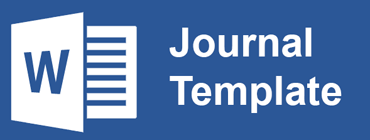RELASI LAKI-LAKI DAN PEREMPUAN DALAM AL-QUR’AN MENURUT AMINA WADUD
Abstract
Abstract: This writing analyzes Amina Wadud’s view on gender in Islam. The issue put forward is on the question of Wadud’s reading method on gender in the Qur’an. This paper reveals that according to Wadud there are three main principles to solve gender problems, namely, tauhîd, taqwa and khalîfah. The principles of tauhîd and taqwa show equality because al-Qur’an prescribes that no one is being having more self-esteem except with the quality of taqwa. Wadud calls these principles as tauhidic paradigm. While the principle of khalîfah in al-Qur’an requires Muslim, both man and woman alike, to become an agent of moral custodian to maintain the harmony of the world. She also urges that the Qur’an be interpreted holistically by considering three aspects; the context of revelation, stylistic and grammar of text, as well as weltanschauung or worldview of the text. As such she designates her methodology as a tauhidic hermeneutic, since upon this methodology, it can be argued that the Qur’an looks at man and woman equally.
Kata Kunci: al-Qur’an, gender, hermeneutika, kesetaraan, tauhid
Full Text:
PDFReferences
Anwar and Rose Ismail, Zainah. “Amina Wadud And Sisters In Islam A Journey Towards Empowerment”, dalam Kecia Ali, et al. (ed.), A Jihad for Justice. t.t.p.: t.p., 2012.
Arsyad al-Banjari, Muhammad. Sabîl al-Muhtadîn II. Mesir: Mustafa al-Baby al-Halabi, 1345 H.
Departemen Agama RI. Al-Qur’an dan Terjemahnya. t.t.p.: PT. Syaamil Cipta Media, t.t.
Gadamer, Hans-Georg. Truth and Method. New York: The Seabury Press, 1975.
Hâmid Abû Zayd, Nashr. Dawâ’ir al-Khauf : Qirâ’ah fî Khithâb al-Mar’ah. Beirut: al-Markaz al-Tsaqâfî al-‘Arabî, 2000.
Izutsu, Toshihiko. God and Man in the Qur'an, Semantics of the Qur'anic Weltanschauung. Kuala Lumpur: Islamic Book Trust, 2008.
Kurdi, et al. Hermeneutika al-Qur 'an dan Hadis. Yogyakarta: Etsaq Pres, 2010.
Kurzman, Charles. Liberal Islam. New York: Oxford University Press, 1998.
Legenhausen, Muhammad. “The Relationship between Philosophy And Theology in The Postmodern Age”, dalam Contemporary Topics of Islamic Thought. Teheran: Alhoda, 2000.
Spielhau, Riem. “Gender Justice As A Common Value? Configurations of Islam In Germany”, dalam Kecia Ali, et al. (ed.), A Jihad for Justice. t.t.p.: t.p., 2012.
Wadud, Amina. Qur’an and Woman: Rereading The Sacred Text From A Woman’s Perspective. New York: Oxford University Press, 1999.
Wadud, Amina. Inside The Gender Jihad. Oxford: Oneworld, 2006
Zamzam, Zafri. Syekh Muhammad Arsyad al-Banjari Sebagai Ulama Juru Dakwah. Banjarmasin: Karya, 1979.
DOI: http://dx.doi.org/10.30821/miqot.v38i2.60
Refbacks
- There are currently no refbacks.
MIQOT: Jurnal Ilmu-ilmu Keislaman (P-ISSN: 0852-0720; E-ISSN: 2502-3616) by http://jurnalmiqotojs.uinsu.ac.id/index.php/jurnalmiqot/index is licensed under a Creative Commons Attribution-ShareAlike 4.0 International License.
Copyright �2023 Universitas Islam Negeri Sumatera Utara Medan. Powered by Public Knowledge Project OJS.
















